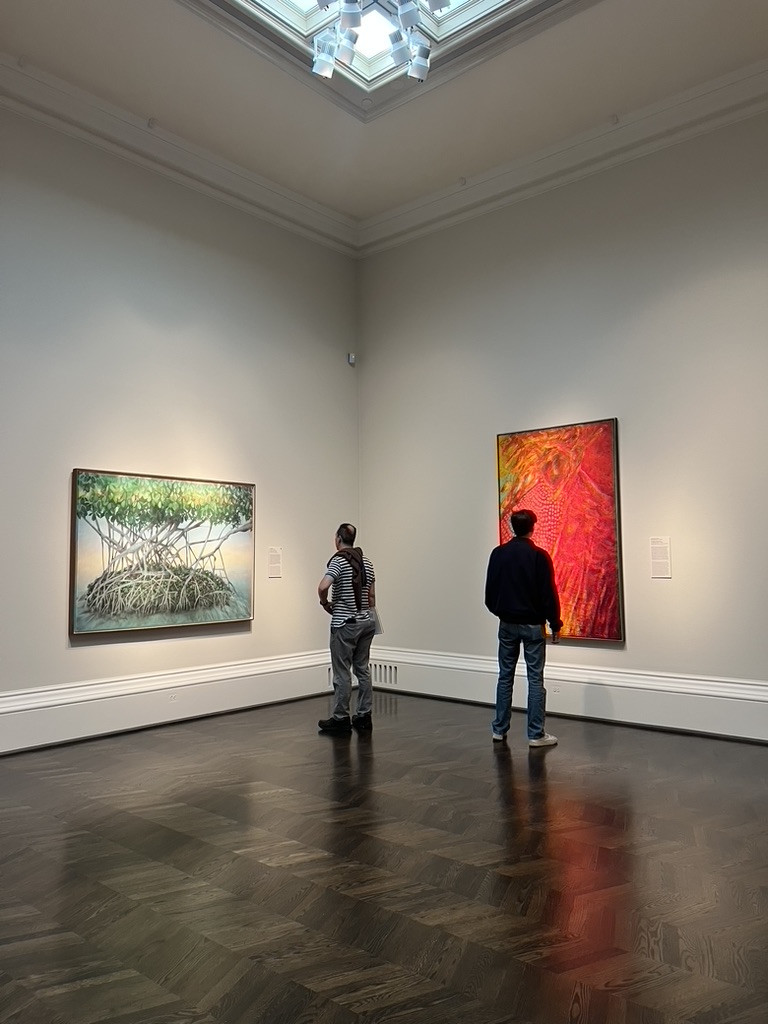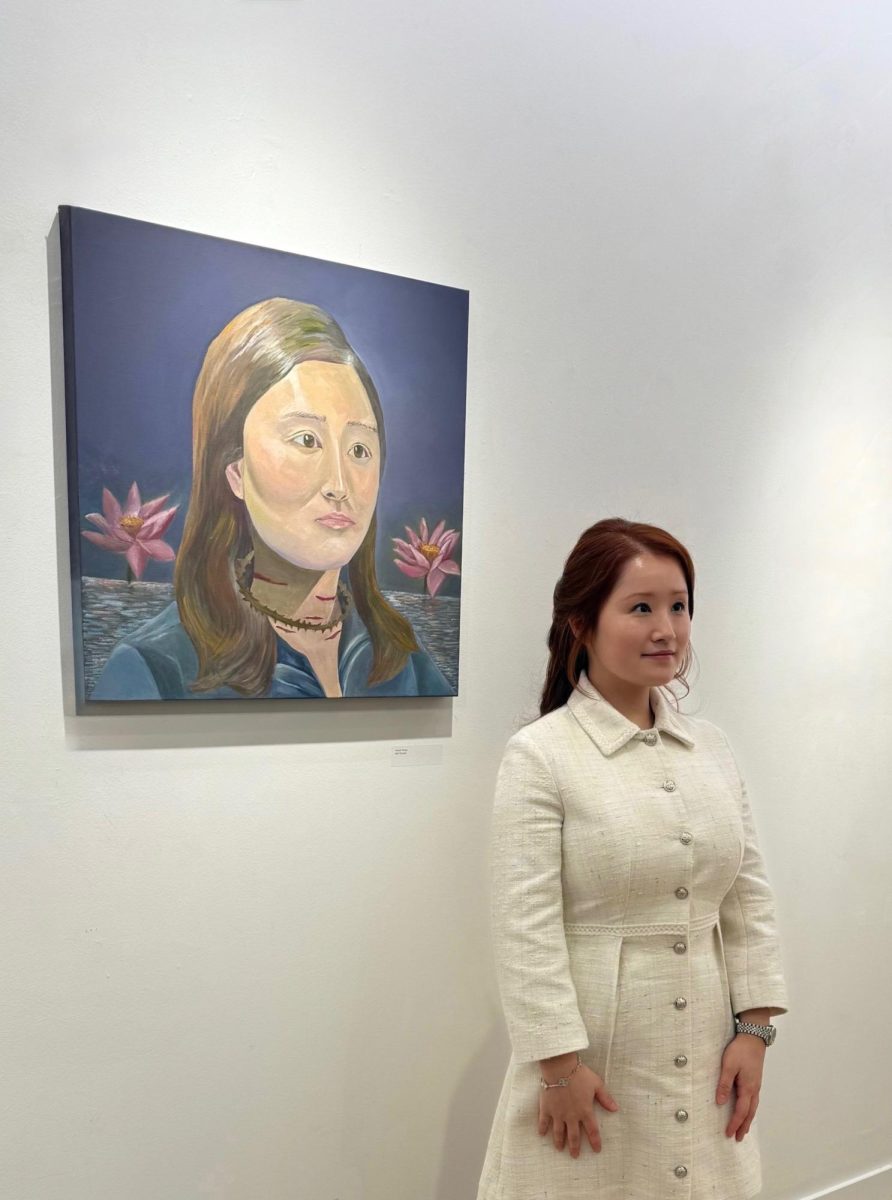A painting of a red-haired woman draped in orange silk resting soundly on a cloud-like bed has taken over the SMU Meadows Museum. Printed on pamphlets and posted around SMU’s campus, “Flaming June” (c. 1895) by Lord Frederic Leighton is the new star of the Meadows Museum.
SMU Meadows Museum’s newest exhibit, “The Sense of Beauty: Six Centuries of Painting from Museo de Arte de Ponce,” centers around “Flaming June.” Showcasing 60 new paintings, this exhibition belongs to the Meadows Museum from Feb. 23 until June 22.
Founded by Rico Luis A. Ferré, the Museo de Arte de Ponce showcases a variety of collections from famed South American and European artists. Ferré sought to create a renowned art collection for Puerto Rico, initially opening the museum in 1959 in Ponce, Puerto Rico.
Once Ferré’s collection grew larger, it needed a new home. Ferré commissioned Edward Durell Stone, an American architect, to design what is now the Museo de Arte De Ponce. After a devastating earthquake hit Puerto Rico in 2020, the nearly 60-year-old architectural masterpiece began renovations, leading to the precious artwork being shared across the world.
The exhibition came from Museo de Arte de Ponce curator Iraida Rodríguez-Negrón’s vision, and SMU’s Meadows Museum is the first stop for “The Sense of Beauty” in the United States. Meadows Museum docent Maria Lahiri explained how this collection is rich in history, especially with “Flaming June” as the focal piece.
“After it was painted in 1895, it was lost for many years before it resurfaced around 1950,” Lahiri said. “By that point, Victorian style painting had gone out of style and people weren’t looking for artwork like ‘Flaming June.’”
Lahiri said Andrew Lloyd Webber, the composer of “Phantom of the Opera,” wanted to buy the painting, which, at the time, was priced at around 50 British pounds.
Once “Flaming June” was part of Ferré’s collection, it became iconic to Puerto Ricans and instantly recognizable. Lahiri emphasized an individual’s personal sense and interpretation of beauty is the framework for how the exhibit is curated, particularly framed around “Flaming June.”
Placed in the center of a dimly lit room, “Flaming June’s” gold frame and the subject’s locks of orange hair illuminate the gallery. Leading up to the painting, though, is a display of landscape paintings ranging from American soil to mythological scenery.
“I love the landscapes for it’s such a tranquil and meditative space,” Lahiri said. “You can find yourself sitting there for 15 to 20 minutes, lost in the beauty of the artists’ portrayal of nature.”
Lahiri’s appreciation for the landscape pieces was common among museum patrons, as it became one of the busiest galleries during the exhibit’s opening. The landscapes drew in campus visitors because of the variety in landscape style.
“I was drawn to stop by Meadows after visiting my daughter,” SMU parent Alissa Parker said. “I saw that ‘Morning in the Tropics’ was in the museum, and ended up looking at it for 30 minutes straight.”
As part of Museo de Arte de Ponce’s partnership with the Meadows Museum, “Female Figure (Sibyl with Tabula Rasa)” (c. 1648) by Diego Velázquez will be lent to Museo de Arte de Ponce in honor of the Meadows Museum’s 60th anniversary. “Female Figure” portrays a woman pointing to a blank tablet, suggesting her intelligence and yearning for new knowledge. Meadows Museum patrons appreciated the exhibit’s emphasis on female beauty and power through paintings that offered somewhat of a social commentary.
To the left of “Flaming June,” hangs Sir John Everett’s “The Escape of a Heretic” which portrays a woman fleeing the Catholic Church. A man, disguised as a friar, holds a speared object over her head threatening the true friar just behind the woman. The painting allows patrons to question the historical and cultural dynamics at the time Everett created the work.
“Looking at Sir John Everett Millais’ 1559 work “The Escape of a Heretic” left me full of theories,” first-year student Tyler Craig said. “The woman’s escape, aided by a gentleman, is pictured in front of a monk with a rosary suffocating him. I wondered if this was Sir Millais’ method of critiquing religious practices at the time.”
“The Escape of a Heretic” and “Flaming June” can be seen at the Meadows Museum through June 22, and students are encouraged to experience “The Sense of Beauty,” as these paintings are on tour for the first time.










